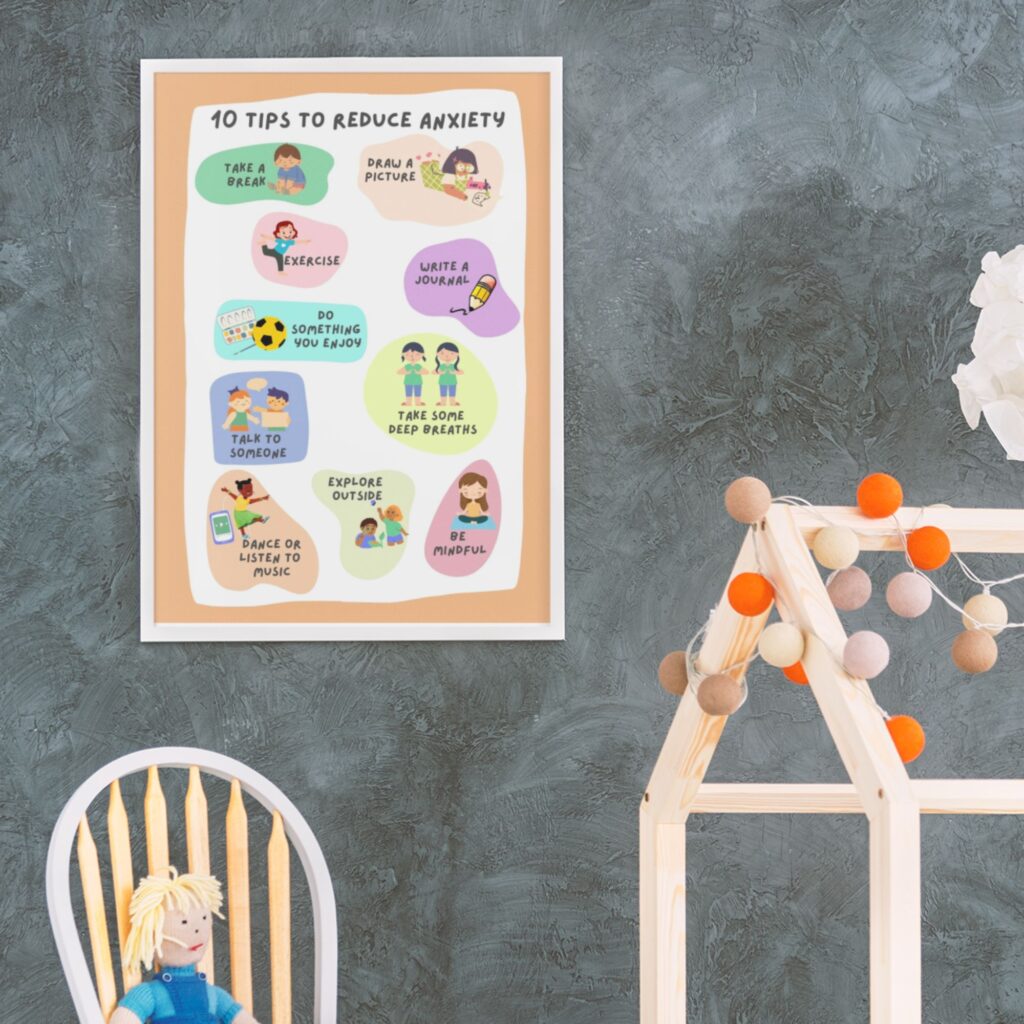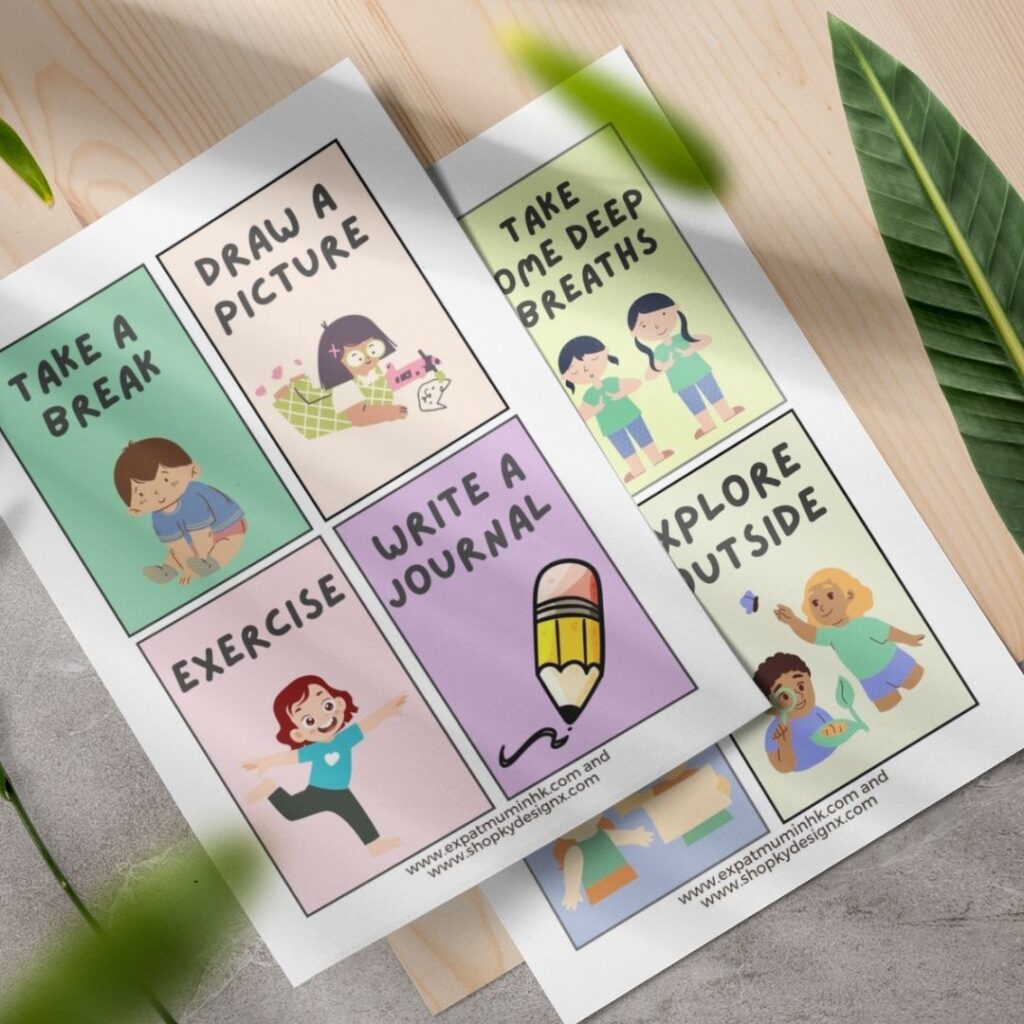10 Tips to Reduce Anxiety in Children
Anxiety is a normal and healthy emotion that everyone experiences from time to time. However, when anxiety becomes a chronic condition that interferes with a child’s ability to function in school, socialize with friends, or take part in other activities, it can be a real problem. There are many things that parents can do to help their children reduce their anxiety. Before we talk about the 10 tips to reduce Anxiety in Children, we are giving you all this free printable poster. Download it now and print.
FREE PRINTABLE POSTER – 10 TIPS TO REDUCING ANXIETY
Subscribe to our email list & get our free printable. This will unlock the file and subscribe you to our email list. You can unsubscribe at any time.
Thank You!
You have successfully joined our subscriber list. Here is your
10 TIPS TO REDUCING ANXIETY PRINTABLE POSTER


1. Take a break
If something is causing a significant amount of anxiety in your child then ask your child to stop and take a break. Use this time to talk about anxiety openly and honestly. Let your child know that it’s normal to feel anxious sometimes. Share your own experiences with anxiety and how you coped with it. This will help your child feel less alone and more understood.
2. Draw a picture
When children are feeling anxious, one way to help them is to encourage them to draw a picture. This can be helpful because it gives them a way to express their feelings, and it can also help to reduce their anxiety. Drawing can help children to feel more in control of their emotions and can be a soothing activity. It can also be a way for them to share their worries with you.

3. Exercise
Exercise is a great way to reduce anxiety. It releases endorphins, which have mood-boosting effects. It also helps to distract from anxious thoughts, provides an outlet for excess energy, and helps relaxes the body after exercise. For children, exercise can be particularly helpful in managing anxiety.

4. Write a journal
Just like drawing a picture, when children feel anxious it can be helpful to encourage but not force your child to write about their anxiety. This can be helpful for them to get their thoughts and feelings down on paper. Make sure a journal is a safe place for your child to express their thoughts and feelings. This means that you shouldn’t judge or criticize what they write. Encourage your child to read their journal entries back to you. This can help you to better understand their anxiety and how to help them.
5. Do something they enjoy
Whatever the activity, it is important to find something that the child enjoys and that helps to ease their anxiety. If the child is struggling to find an activity that works for them, sit with them and encourage them to think about activities that they have enjoyed or think they may like to try.
6. Talk to someone
Seek professional help. If your child’s anxiety is persistent and/or interfering with their daily life, it might be time to seek professional help. A therapist can help your child to understand and manage their anxiety.

7. Take some deep breaths
Deep breathing is a relaxation technique that can help a child to reduce their anxiety and promote feelings of calm. It involves inhaling deeply and slowly through the nose, filling up the lungs, and then exhaling slowly and smoothly through the mouth. Watch the video to ensure your child is doing it effectively.
8. Dance or listen to music
There are a number of ways that music can be used to help reduce anxiety. One option is to listen to calm, relaxing music. This can help your child to slow down their heart rate and breathing, and allow them to focus on something other than their anxious thoughts. Another option is to use more fast-paced music and get your child to dance and sing around. Dancing and singing allow children to be expressive and may help them to get out of their heads and into their bodies.
9. Explore outside
Encourage your child to play and explore nature. This can help them to develop a sense of mastery and control, which can help reduce anxiety. Help your child to notice and appreciate the beauty around them. Make sure to spend time in nature yourself! Modeling calm and enjoyment can help your child to see nature as a positive place. With a little effort, nature can be a powerful tool in helping to reduce anxiety in children. By making it a part of your daily routine, you can help your child to find calm and peace in the great outdoors.

10. Be mindful
Mindfulness is a potent antidote to anxiety. When we are anxious, our minds are full of worries and concerns about the future. We are so focused on what could go wrong that we forget to enjoy the present moment. Mindfulness allows us to step out of our anxious thoughts and focus on the here and now. Check out this 5-minute Guided Meditation for Kids.
Empower your child with the gift of calmness - our free poster on reducing anxiety provides effective strategies to ease their worries and lift their spirits.
Introducing our latest addition to your child’s playroom or classroom – the Free Reducing Anxiety in Children Poster. This poster is specifically designed to address the growing concern of anxiety among children and offers a range of effective calming strategies for parents, teachers, and caregivers alike.
Featuring simple yet powerful techniques such as doing some exercise, drawing a picture and dancing, that are easy to understand and apply in everyday situations. Our expertly crafted poster will not only help reduce anxiety but also promote emotional intelligence, self-awareness and overall wellbeing in your little ones.
FREE PRINTABLE POSTER – 10 TIPS TO REDUCING ANXIETY
Subscribe to our email list & get our free printable. This will unlock the file and subscribe you to our email list. You can unsubscribe at any time.
Thank You!
You have successfully joined our subscriber list. Here is your
10 TIPS TO REDUCING ANXIETY PRINTABLE POSTER

Conclusion
We hope you enjoyed reading this 10 Tips to Reduce Anxiety in Children post. Please leave a comment in the comment section if you have tried to implement any of the tips and if so was it useful.
Please note: The information presented in the post is for information purposes only and not as medical advice. This post was written by a qualified mental health occupational therapist however we are not your professional team.


